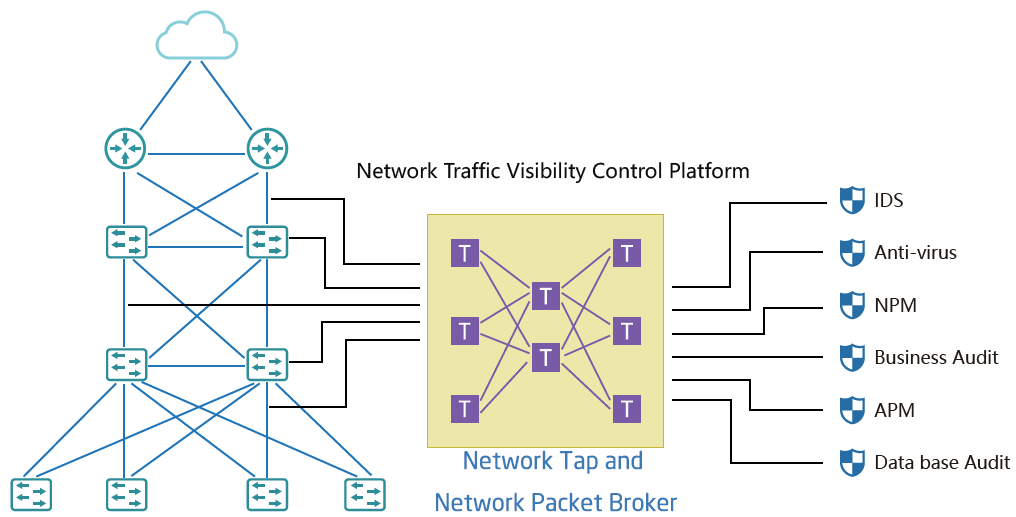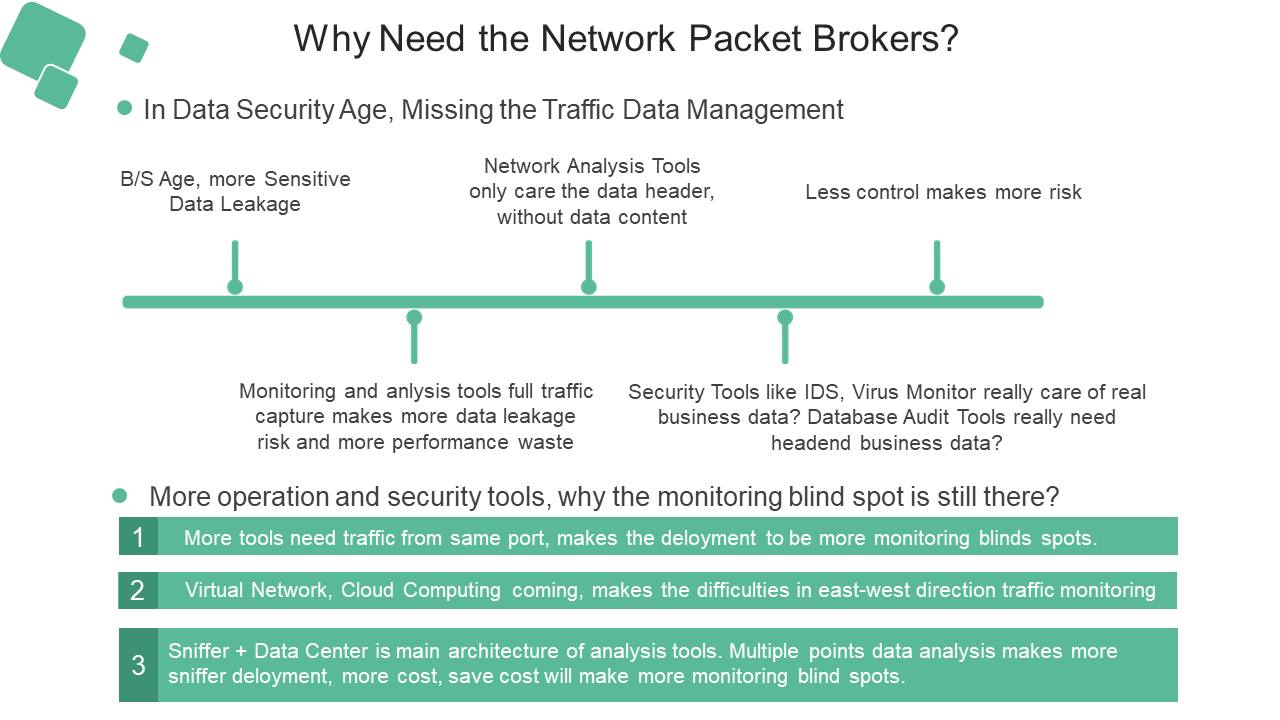The rise of next-generation network packet brokers has brought about significant advancements in network operation and security tools. These advanced technologies have allowed organizations to become more agile and align their IT strategies with their business initiatives. However, despite these developments, there is still a prevalent network traffic monitoring blind spot that organizations need to address.
Network Packet Brokers (NPBs) are devices or software solutions that act as intermediaries between the network infrastructure and the monitoring tools. They enable visibility into network traffic by aggregating, filtering, and distributing network packets to various monitoring and security tools. NPBs have become crucial components of modern networks due to their ability to improve operational efficiency and enhance security posture.
With the proliferation of digital transformation initiatives, organizations are increasingly relying on a complex network infrastructure comprised of numerous devices and heterogeneous protocols. This complexity, coupled with the exponential growth in network traffic volume, makes it challenging for traditional monitoring tools to keep up. Network packet brokers provide a solution to these challenges by optimizing network traffic distribution, streamlining data flow, and enhancing the performance of monitoring tools.
Next-generation Network Packet Brokers have expanded upon the capabilities of traditional NPBs. These advancements include enhanced scalability, improved filtering capabilities, support for various types of network traffic, and increased programmability. The ability to handle large volumes of traffic and intelligently filter relevant information allows organizations to gain comprehensive visibility into their networks, identify potential threats, and respond swiftly to security incidents.
Furthermore, next-generation NPBs support a wide range of network operation and security tools. These tools include network performance monitoring (NPM), intrusion detection system (IDS), data loss prevention (DLP), network forensics, and application performance monitoring (APM), among many others. By providing the necessary network traffic feeds to these tools, organizations can effectively monitor network performance, detect and mitigate security threats, and ensure compliance with regulatory requirements.
However, despite the advancements in network packet brokers and the availability of a diverse range of monitoring and security tools, there are still blind spots in network traffic monitoring. These blind spots occur due to several reasons:
1. Encryption: The widespread adoption of encryption protocols, such as TLS and SSL, has made it challenging to inspect network traffic for potential threats. While NPBs can still collect and distribute encrypted traffic, the lack of visibility into the encrypted payload limits the effectiveness of security tools in detecting sophisticated attacks.
2. IoT and BYOD: The increasing number of Internet of Things (IoT) devices and the Bring Your Own Device (BYOD) trend have significantly expanded the attack surface of organizations. These devices often bypass traditional monitoring tools, leading to blind spots in network traffic monitoring. Next-generation NPBs need to adapt to the growing complexities introduced by these devices to maintain comprehensive visibility into network traffic.
3. Cloud and Virtualized Environments: With the widespread adoption of cloud computing and virtualized environments, network traffic patterns have become more dynamic and dispersed across various locations. Traditional monitoring tools struggle to capture and analyze traffic in these environments, leaving blind spots in network traffic monitoring. Next-generation NPBs must incorporate cloud-native capabilities to effectively monitor network traffic in cloud and virtualized environments.
4. Advanced Threats: Cyber threats are constantly evolving and becoming more sophisticated. As attackers become more adept at evading detection, organizations need advanced monitoring and security tools to identify and mitigate these threats effectively. Traditional NPBs and legacy monitoring tools may not have the necessary capabilities to detect these advanced threats, leading to blind spots in network traffic monitoring.
To address these blind spots, organizations should consider adopting a holistic approach to network monitoring that combines advanced NPBs with AI-powered threat detection and response systems. These systems leverage machine learning algorithms to analyze network traffic behavior, detect anomalies, and automatically respond to potential threats. By integrating these technologies, organizations can bridge the network traffic monitoring blind spots and enhance their overall security posture.
In conclusion, while the rise of next-generation network packet brokers and the availability of more network operation and security tools have greatly improved network visibility, there are still blind spots that organizations need to be aware of. Factors such as encryption, IoT and BYOD, cloud and virtualized environments, and advanced threats contribute to these blind spots. To effectively address these challenges, organizations should invest in advanced NPBs, leverage AI-powered threat detection systems, and adopt a holistic approach to network monitoring. By doing so, organizations can significantly reduce their network traffic monitoring blind spots and enhance their overall security and operational efficiency.

Post time: Oct-09-2023






